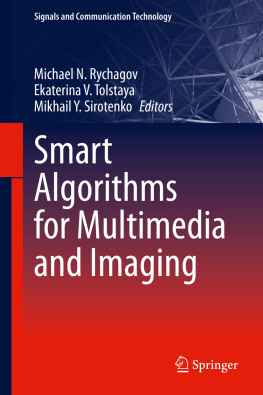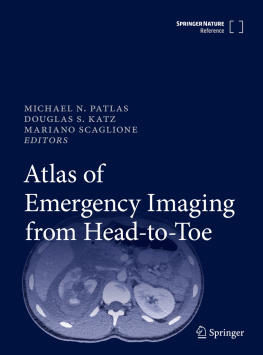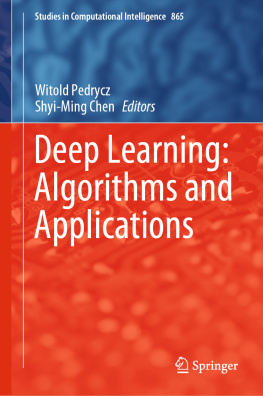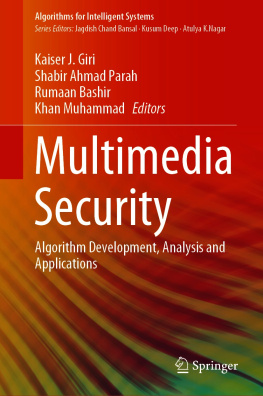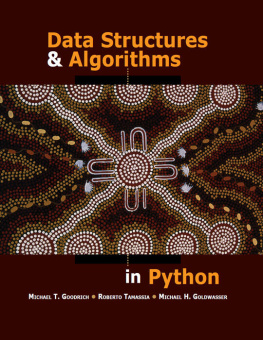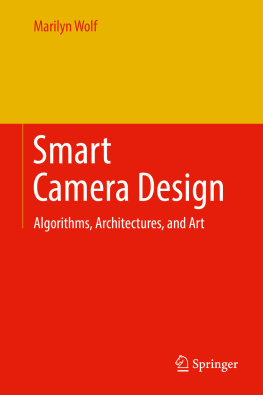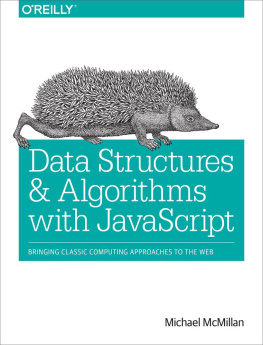Michael N. Rychagov - Smart Algorithms for Multimedia and Imaging
Here you can read online Michael N. Rychagov - Smart Algorithms for Multimedia and Imaging full text of the book (entire story) in english for free. Download pdf and epub, get meaning, cover and reviews about this ebook. publisher: Springer International Publishing, genre: Home and family. Description of the work, (preface) as well as reviews are available. Best literature library LitArk.com created for fans of good reading and offers a wide selection of genres:
Romance novel
Science fiction
Adventure
Detective
Science
History
Home and family
Prose
Art
Politics
Computer
Non-fiction
Religion
Business
Children
Humor
Choose a favorite category and find really read worthwhile books. Enjoy immersion in the world of imagination, feel the emotions of the characters or learn something new for yourself, make an fascinating discovery.
- Book:Smart Algorithms for Multimedia and Imaging
- Author:
- Publisher:Springer International Publishing
- Genre:
- Rating:3 / 5
- Favourites:Add to favourites
- Your mark:
- 60
- 1
- 2
- 3
- 4
- 5
Smart Algorithms for Multimedia and Imaging: summary, description and annotation
We offer to read an annotation, description, summary or preface (depends on what the author of the book "Smart Algorithms for Multimedia and Imaging" wrote himself). If you haven't found the necessary information about the book — write in the comments, we will try to find it.
Smart Algorithms for Multimedia and Imaging — read online for free the complete book (whole text) full work
Below is the text of the book, divided by pages. System saving the place of the last page read, allows you to conveniently read the book "Smart Algorithms for Multimedia and Imaging" online for free, without having to search again every time where you left off. Put a bookmark, and you can go to the page where you finished reading at any time.
Font size:
Interval:
Bookmark:
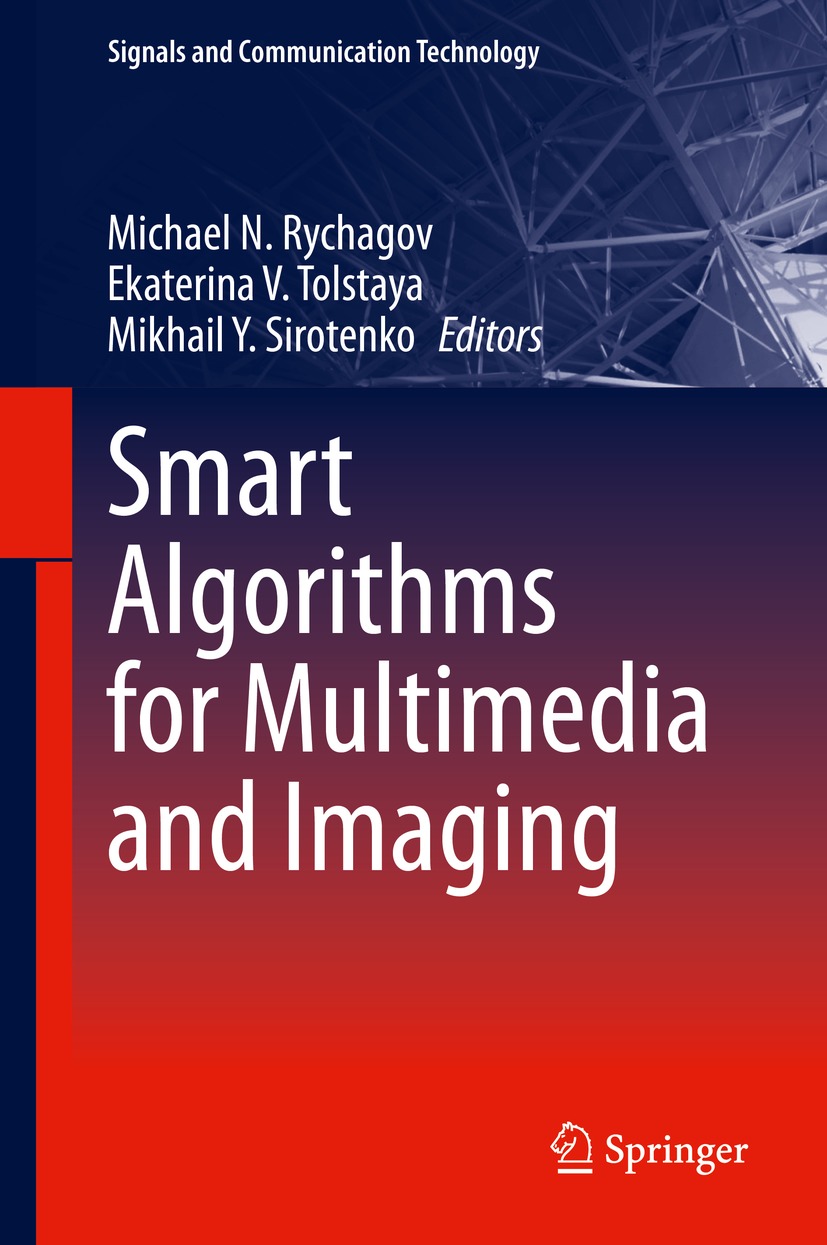
This series is devoted to fundamentals and applications of modern methods of signal processing and cutting-edge communication technologies. The main topics are information and signal theory, acoustical signal processing, image processing and multimedia systems, mobile and wireless communications, and computer and communication networks. Volumes in the series address researchers in academia and industrial R&D departments. The series is application-oriented. The level of presentation of each individual volume, however, depends on the subject and can range from practical to scientific.
**Indexing: All books in Signals and Communication Technology are indexed by Scopus and zbMATH**
For general information about this book series, comments or suggestions, please contact Mary James at mary.james@springer.com or Ramesh Nath Premnath at ramesh.premnath@springer.com .
More information about this series at http://www.springer.com/series/4748

This Springer imprint is published by the registered company Springer Nature Switzerland AG
The registered company address is: Gewerbestrasse 11, 6330 Cham, Switzerland
Over the past decades, people have produced vast amounts of multimedia content, including text, audio, images, animations, and video. The substance of this content belongs, in turn, to various areas, including entertainment, engineering, medicine, business, scientific research, etc. This content should be readily processed, analysed, and displayed by numerous devices like TVs, mobile devices, VR headsets, medical devices, media players, etc., without losing its quality. This brings researchers and engineers to the problem of the fast transformation and processing of multidimensional signals, where they must deal with different sizes and resolutions, processing speed, memory, and power consumption. In this book, we describe smart algorithms applied both for multimedia processing in general and in imaging technology in particular.
In the first book of this series, Adaptive Image Processing Algorithms for Printing by I.V. Safonov, I.V. Kurilin, M.N. Rychagov, and E.V. Tolstaya, published by Springer Nature Singapore in 2018, several algorithms were considered for the image processing pipeline of photo-printer and photo-editing software tools that we have worked on at different times for processing still images and photos.
The second book, Document Image Processing for Scanning and Printing by the same authors, published by Springer Nature Switzerland in 2019, dealt with document image processing for scanning and printing. A copying technology is needed to make perfect copies from extremely varied originals; therefore, copying is not in practice separable from image enhancement. From a technical perspective, it is best to consider document copying jointly with image enhancement.
Image and Video Conversion
TV and Display Applications
Machine Learning and Artificial Intelligence
Mobile Algorithms
Image and Video Conversion includes five chapters that cover solutions on super-resolution using a multi-frame-based approach as well as machine learning-based super-resolution. They also cover the processing of 3D signals, namely depth estimation and control, and semi-automatic 2D to 3D video conversion. A comprehensive review of visual lossless colour compression technology concludes this part.
TV and Display Applications includes three chapters in which the following algorithms are considered: video editing, real-time sports episode detection by video content analysis, and the generation and reproduction of natural effects.
Machine Learning and Artificial Intelligence includes four chapters, where the following topics are covered: image classification as a service, mobile user profiling, and automatic view planning in magnetic resonance imaging, as well as dictionary-based compressed sensing MRI (magnetic resonance imaging).
Finally, Mobile Algorithms consists of four chapters where the following algorithms and solutions implemented for mobile devices are described: a depth camera based on a colour-coded aperture, the animated graphical abstract of an image, a motion photo, and approaches and methods for iris recognition for mobile devices.
The solutions presented in the first two books and in the current one have been included in dozens of patents worldwide, presented at international conferences, and realized in the firmware of devices and software. The material is based on the experience of both editors and the authors of particular chapters in industrial research and technology commercialization. The authors have worked on the development of algorithms for different divisions of Samsung Electronics Co., Ltd, including the Printing Business, Visual Display Business, Health and Medical Equipment Division, and Mobile Communication Business for more than 15 years.
Font size:
Interval:
Bookmark:
Similar books «Smart Algorithms for Multimedia and Imaging»
Look at similar books to Smart Algorithms for Multimedia and Imaging. We have selected literature similar in name and meaning in the hope of providing readers with more options to find new, interesting, not yet read works.
Discussion, reviews of the book Smart Algorithms for Multimedia and Imaging and just readers' own opinions. Leave your comments, write what you think about the work, its meaning or the main characters. Specify what exactly you liked and what you didn't like, and why you think so.

